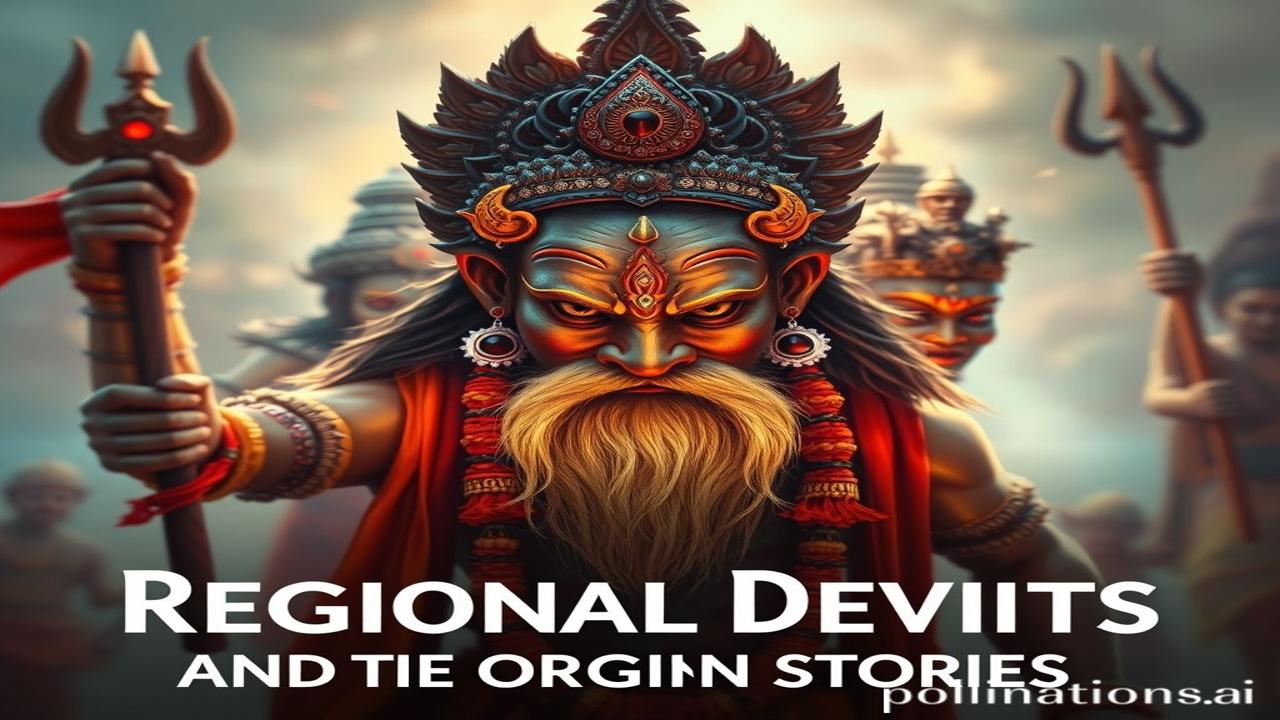Waqt Ke Ret Mein Dhundli Si Parchhaiyan: Regional Deities & Their Origin Stories
Kabhi socha hai, jab suraj dhire-dhire dhalta hai aur mandir ki ghantiyan bajti hain, toh kitni kahaniyan hawa mein goonjati hain? Kahaniyan jo shakti, bhakti aur aasthha ki gehrai se judi hain. Aisi kahaniyan, jo humare desh ke har kone mein, har gaon mein, har dil mein basii hui hain. These are the stories of our regional deities, the gods and goddesses who are as much a part of the landscape as the rivers and mountains themselves.
Kya Hain Yeh Regional Deities? A Brief Historical Glimpse
Regional deities, or Kshetra Devatas as they’re sometimes called, are gods and goddesses worshipped primarily within specific regions or localities. Unlike the pan-Indian deities like Shiva, Vishnu, or Durga, these deities are often rooted in local folklore, traditions, and even geographical features. Think of them as the guardians, the protectors, the lifeblood of a particular place.
These deities often predate the standardization of Hinduism as we know it today. Their origins can be traced back to pre-Vedic traditions, tribal beliefs, and animistic practices. Picture this: before elaborate temples and Sanskrit chants, there were sacred groves, village elders offering prayers to the spirits of the land, and rituals passed down through generations.
The fascinating thing is how these deities were eventually absorbed into the larger Hindu pantheon. Local legends were woven into existing narratives, their powers re-imagined, and their importance acknowledged. This process of cultural assimilation is a hallmark of Indian history, showcasing a unique ability to embrace and integrate diverse beliefs.
Zameeni Sach: Log Aur Jeevan – Ek Gaon, Ek Devi
Let’s imagine a small village in Maharashtra, nestled amidst rolling hills and lush green fields. The year is 1750. The Maratha Empire is at its peak. In this village, lives a farmer named Ramu. His life revolves around the seasons, his family, and the local deity, Gram Devi.
Gram Devi isn’t just a statue in a temple; she’s the embodiment of the village’s well-being. Ramu believes she protects his crops from drought, his family from disease, and his village from misfortune. Every year, after the harvest, the villagers gather to celebrate Gram Devi’s jatra.
“Ma Gram Devi ki kripa se fasal acchi hui,” Ramu says to his wife, Savitri, as they prepare for the festivities. “Yeh jatra hamare liye bahut mahatvapurna hai. It’s a way of showing our gratitude.”
Savitri, dressed in a vibrant nauvari saree, carefully arranges flowers and offerings. The air is thick with the scent of incense, marigolds, and freshly cooked puran poli. The village comes alive with music, dance, and prayers, all dedicated to the guardian of their land.
Dharohar Aur Pehchan: Aaj Ke India Mein Gram Devis Ka Mahatva
Today, even in the age of skyscrapers and smartphones, Gram Devis and other regional deities continue to hold immense significance. They are a vital part of India’s cultural fabric, representing the diversity and localized expression of faith.
You’ll find them in countless villages and towns across the country – from the fierce Kali figures of Bengal protecting against epidemics, to the benevolent deities of the Himalayas ensuring the safety of shepherds. Their influence is visible in the art, architecture, and rituals specific to each region. Festivals dedicated to these deities draw thousands of devotees, reinforcing community bonds and preserving local traditions.
This connection to regional deities fosters a sense of Bharatiyata – a sense of belonging, of rootedness, and of shared cultural heritage. It reminds us that India is not just a nation, but a mosaic of unique identities, each contributing to the richness of the whole.
Mazedaar Tathya Ya Bhram-Bhanjak: Did You Know This?
Log samajhte hain ki regional deities sirf gaon tak seemit hain. Lekin asli sach yeh hai ki many big cities have their own patron deities! For example, Mumbai has Mumbadevi, from whom the city gets its name. Similarly, Chennai has goddess Meenakshi, and Kolkata has Kali. These deities might have humble origins, but their influence has grown along with the cities themselves.
Drishya Aur Bhavnayein: Feeling The Spirit
Imagine standing outside a small temple dedicated to a regional deity. The air is thick with the scent of jasmine and sandalwood. The temple walls, painted in vibrant colors, depict scenes from local legends. The sounds of devotional songs and the rhythmic beating of drums fill the air. You can almost feel the presence of the deity, a tangible connection to the land and its people. The temple’s age-old architecture still reflects the emotions of the time it was made.
Antim Vichar Ya Uddharan: The Enduring Power of Belief
“Yatra naryastu pujyante, ramante tatra devata.” (Where women are honored, there the gods are pleased.) This ancient Sanskrit shloka encapsulates the essence of Indian spirituality, highlighting the importance of respect, reverence, and a deep connection to the divine in all its forms. Whether it’s a grand temple dedicated to a pan-Indian god or a humble shrine dedicated to a regional deity, the power of belief continues to shape our lives and connect us to something larger than ourselves.
